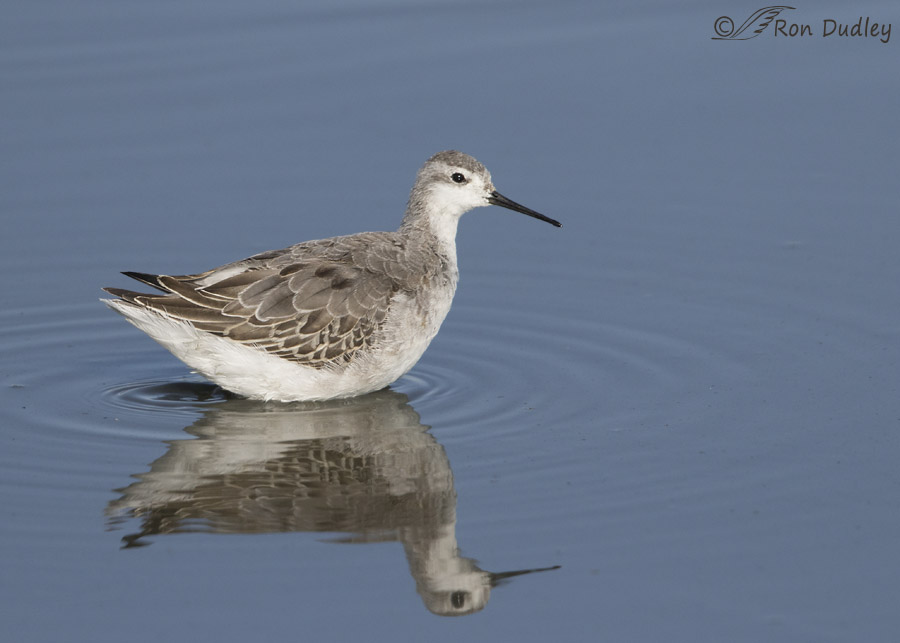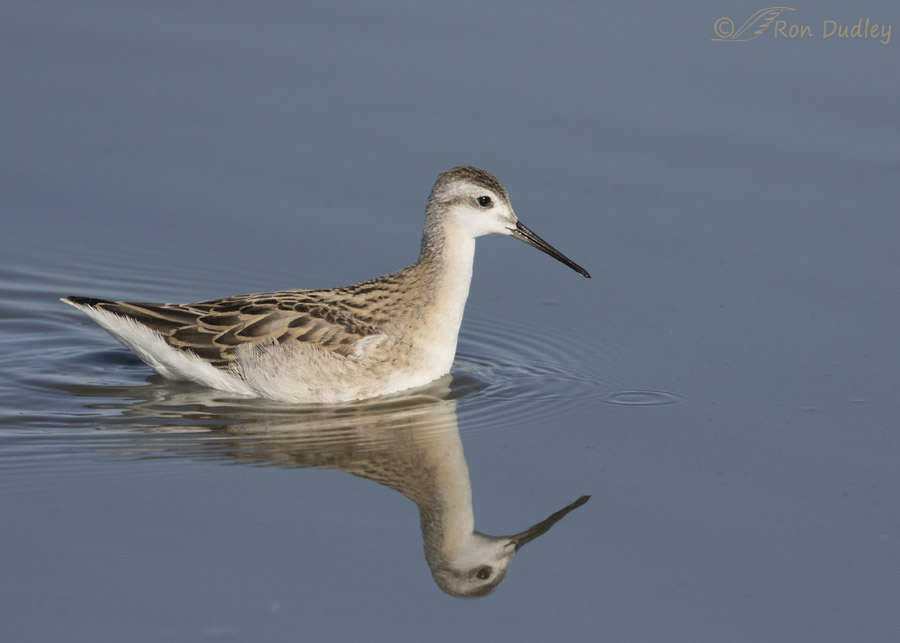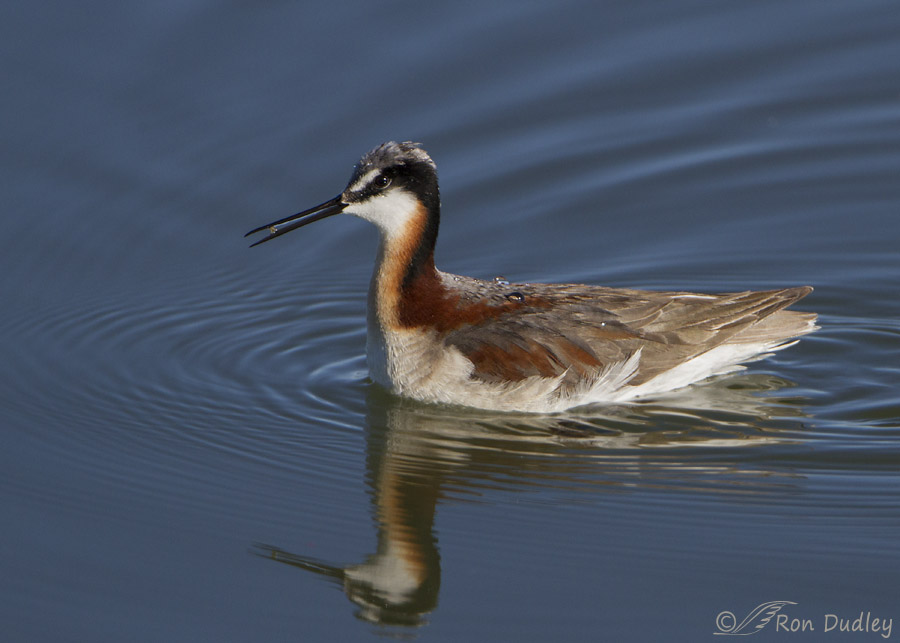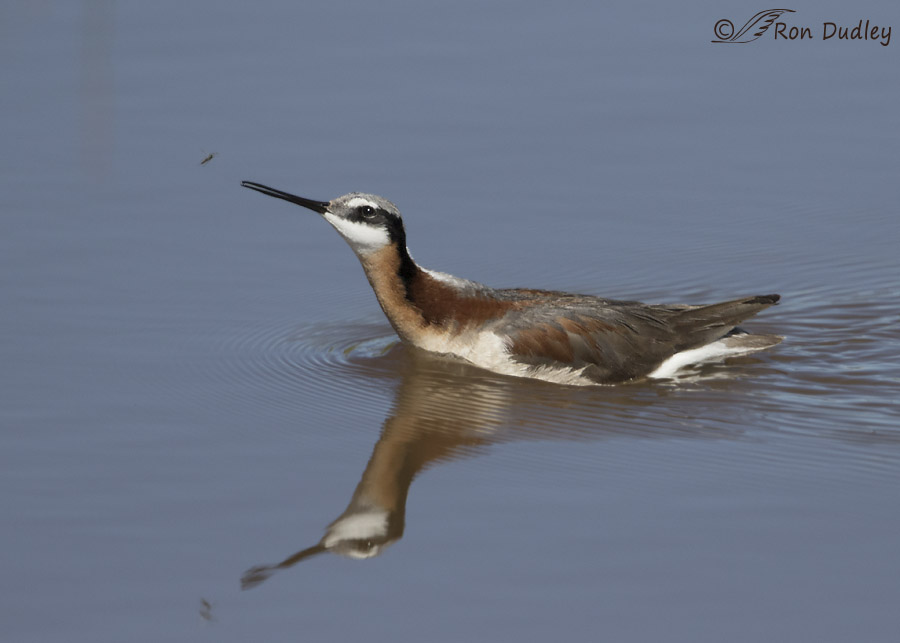Wilson’s Phalaropes have several interesting plumages and feeding techniques.

1/4000, f/6.3, ISO 640, Canon 7D Mark II, Canon EF500mm f/4L IS II USM +1.4 tc, not baited, set up or called in
I photographed this nonbreeding adult a few days ago at Bear River MBR. It was mixed in with a small flock of other phalaropes as they fed using their typical spinning “whirling dervish” technique to bring up food from the bottom. That behavior is difficult to photograph well so I’ve not included a photo of it here but I can tell you that watching them spin through my lens literally made me dizzy.

1/4000, f/6.3, ISO 640, Canon 7D Mark II, Canon EF500mm f/4L IS II USM +1.4 tc, not baited, set up or called in
This is a juvenile, mixed in with the same flock. Juveniles are more colorful than adults.

1/3200, f/6.3, ISO 640, Canon 7D Mark II, Canon EF500mm f/4L IS II USM +1.4 tc, not baited, set up or called in
But adults in the breeding season are more colorful – each of these last two images was taken in June. I believe this bird to be a female.
Wilson’s Phalaropes are noted for their reversed sex-role mating system. Females are larger and more brightly colored than males and females compete for mates rather than vice versa. And it’s the males that provide all parental care for the offspring.
This image shows another interesting feeding technique of the species. Wilson’s Phalaropes use surface tension of a film of water between their mandibles to transport food from the tip of their beak to the mouth. Here the bird has an aquatic invertebrate in its bill and that film of water can be seen as a pale blue line between the prey and mouth of the bird.

1/3200, f/6.3, ISO 500, Canon 7D Mark II, Canon EF500mm f/4L IS II USM +1.4 tc, not baited, set up or called in
Here another adult female is pursuing a midge in the air. They often lunge/stab at flying insects and this attempt was successful though my image of the actual capture was even softer than this one.
Large numbers of Wilson’s Phalaropes stage at hypersaline/alkaline lakes of western North America as they migrate to their wintering habitats in Bolivia and Argentina. We get many of them here near the Great Salt Lake.
Ron


Terrific series! I’ve seen one phalarope here in Florida and was fortunate to observe their “spinning’ behavior. As you pointed out, I also became dizzy trying to watch it through a telephoto lens! Beautiful images of a delicate species.
These are pretty birds that I am not familiar with. 😀 I really enjoyed the prey shots!
Fascinating.
Your commentary always helps me see details that I would probably otherwise miss – like the pale blue line.
Thank you so much.
I wasn’t sure what that pale blue line was for a moment, EC. At first I thought it looked like a sharpening halo but that didn’t make any sense. Then it came to me…
These are are beautiful, graceful-looking birds…with very interesting “fishing” techniques. I love the soft, subtlety of their colors. I’m more observant and appreciative of the reflections, too, thanks to you….
Thank you, Patty.
Beautiful shots of bird I know only by name. I’m also paying a lot more attention to the reflections, and enjoying them.
Thank you, Susan. I’ve been shooting a lot more at Bear River MBR lately so I’m getting more reflections than usual.